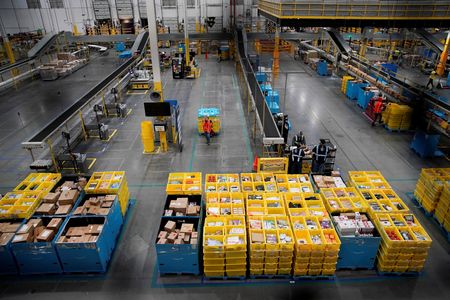WASHINGTON (Reuters) – U.S. business inventories rose moderately in December as businesses carefully managed stocks amid slowing demand, with the inventory-to-sales ratio hitting a two-year high.
Business inventories increased 0.3% after climbing by the same margin in November, the Commerce Department said on Wednesday. Inventories are a key component of gross domestic product. December’s gain was in line with economists’ expectations.
Inventories increased 12.7% on a year-on-year basis in December. Inventory accumulation surged in the fourth quarter, mostly reflecting an unwanted piling up of goods, as higher borrowing costs contributed to the slowest pace of growth in domestic demand in 2-1/2 years.
The Federal Reserve has raised its policy rate by 450 basis points since last March from near zero to a 4.50%-4.75% range, with the bulk of the increases between May and December. Two additional rate hikes of 25 basis points are expected in March and May.
Retail inventories increased 0.7%, instead of 0.5% as estimated in an advance report published last month. They were unchanged in November. Improved supply as well as a shift in spending back to services have added to excess merchandise at retailers, leading some to offer discounts.
Motor vehicle inventories advanced 1.4%, instead of 1.1% as estimated last month. They increased 1.1% in November. Retail inventories excluding autos, which go into the calculation of GDP, rose 0.4% instead of 0.3% as estimated last month.
Inventories accounted for half of the 2.9% annualized growth in GDP last quarter, and a liquidation of these unsold goods could contribute to tipping the economy into recession.
Wholesale inventories edged up 0.1% in December. Stocks at manufacturers rose 0.4%.
Business sales fell 0.6% in December after decreasing 1.2% in November. At December’s sales pace, it would take 1.37 months for businesses to clear shelves. That is the longest since November 2020 and was up from 1.35 months in November.
(Reporting by Lucia Mutikani; Editing by Andrea Ricci)

